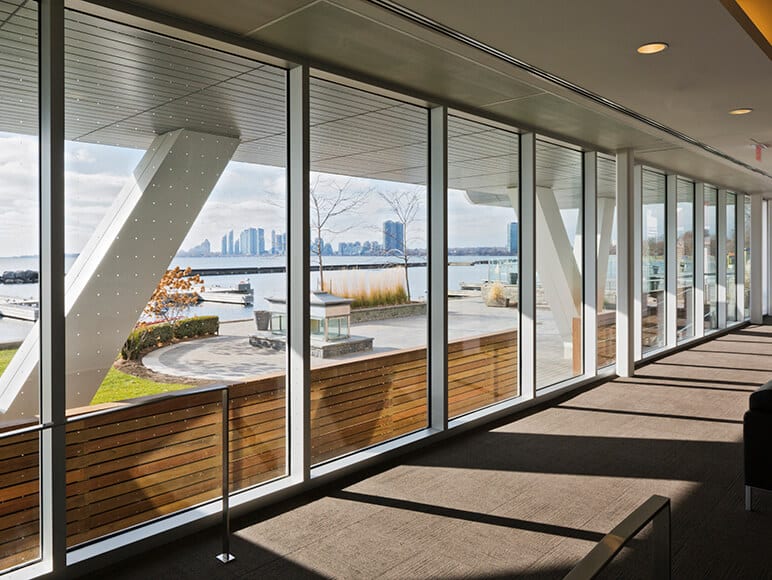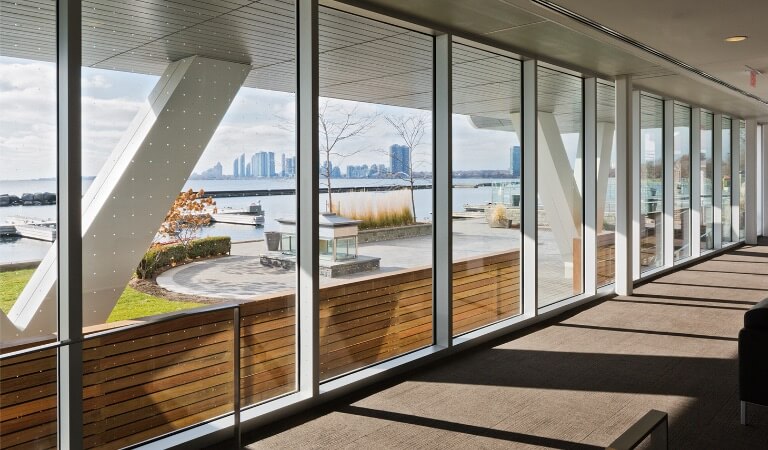Bird friendly building design continues to be a challenge, with up to a billion birds dying each year in the United States alone due to collisions with buildings and specifically the glass installed.
The glass industry has seen growing awareness to this serious problem and bird friendly glass is being touted on a more regular basis, but questions have arisen at how that moniker is assigned. How do we find out the glass is truly bird friendly?
Protocols used to determine its bird friendliness have been developed by the American Bird Conservancy (ABC), Daniel Klem, Professor of Ornithology and Conservation Biology at Muhlenberg College and Martin Rössler, Ornithologist at the Department of Integrative Biology and Biodiversity Research, University of Natural Resources and Applied Life Sciences, in Vienna, Austria.
These experts have been absolutely tireless in their efforts to protect the species. But the latest step has been to take the process and move it to the ASTM level, and with that certification, questions on the legitimacy of the protocol will be reduced if not removed completely.
According to Dr. Neil McSporran, Manager of Business Development, Architectural, and Technical Services at Pilkington North America, the process is now off the ground.
“Right now the development of the standard test method is reasonably early in the process. A first draft of the test has been proposed and initial comments on this draft have been made. A meeting is being planned to discuss this in more detail after which I think we’ll see some good progress being made. “
“The most obvious challenge for this process is that ASTM has never had a protocol that includes live animals before. So we have to figure out what needs to be explained and what doesn’t. For example, our test involves working with specialists who safely net, handle and monitor the songbirds we fly in the tunnel,” said Dr. Christine Sheppard, Bird Collisions Campaign Manager at ABC and Co-Chair of the ASTM Committee on Bird Friendly Glass testing.
For those on the glass and glazing side of things, McSporran also recognized the immense challenge that this testing faces
“This is a very different testing protocol to those of us used to developing tests for glazing.”
The ASTM process has brought together great minds from all parts of both the glass industry and elsewhere.
“We have a great committee, and a large one, with experts from diverse parts of the glass industry, as well as architects, ornithologists and conservation biologists. We posted a first draft of the protocol and got a lot of good comments,” Sheppard added.
A few others that are representing the glass and glazing industry include Urmilla Jokhu-Sowell, Technical Director of the Glass Association of North America (GANA) which is a leading trade organization in the industry and Sylvain Denis, Research and Development Coordinator at Walker Glass, which has made a strong commitment to bird safety glazing with several tested and ABC approved products in the AviProtek® line of acid-etched glass.
Denis and Walker Glass recognized the need for a bird friendly product in the marketplace as municipal, state and provincial codes and standards started to come online.
“When we heard of this new trend for bird protection, our first thought was that our partial etching technique could easily be used to develop a new product line that would satisfy all requirements. In short, we had an effective solution to a new requirement. Of course, the reality is that we still had a lot of work on our hands before we were able to develop and test our new AviProtek® product line. As a matter of fact, we are still working to expand this product line. We take great pride on being a bird deterrent solution offering an optimal combination of visual markers for birds, daylighting and not obstructing occupant’s view to the exterior.”
“None of us knew of the ridiculous amount of birds that die each year due to impact on human structures. We truly believe that our products can help reduce bird collisions and we are happy to do our part for the environment.”
Seeing people like this and others has given Sheppard hope that the glass industry is really getting in tune with the importance of bird friendly glazing.
“The glass industry’s response has been terrific, a combination of caring about the birds killed by glass and wanting to help solve the problem.”
So with testing, a new ASTM process, and awareness, there’s certainly a positive trend going into slowing the death march birds unfortunately face due to bad design and/or glass choices. That trend is something that Sheppard can appreciate.
“I think I’m seeing an increasing awareness of the issue that is leading to change. There is still a long way to go – the glass that’s already out there is killing a billion birds a year – but you don’t have to give up glass to save birds – you simply have to think about birds early in the design phase. Enough buildings have been constructed and remediated to show that considering birds doesn’t impede creativity, impair function or bust budgets.”


